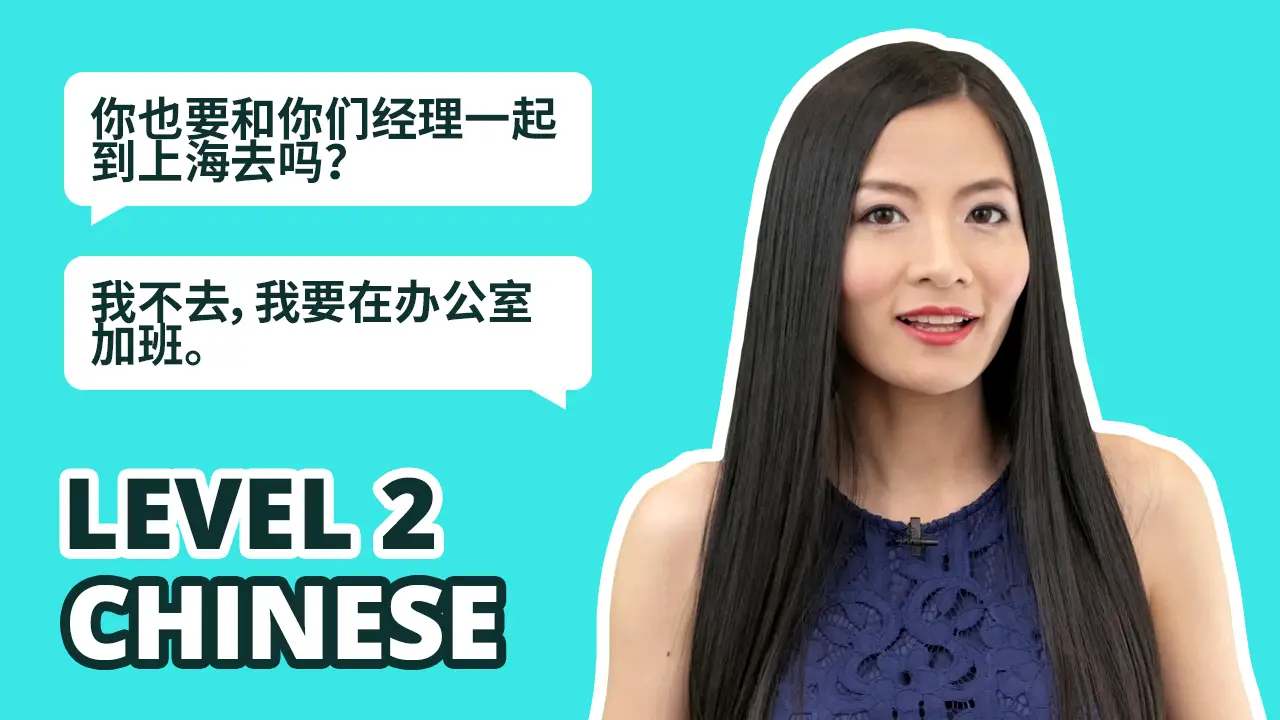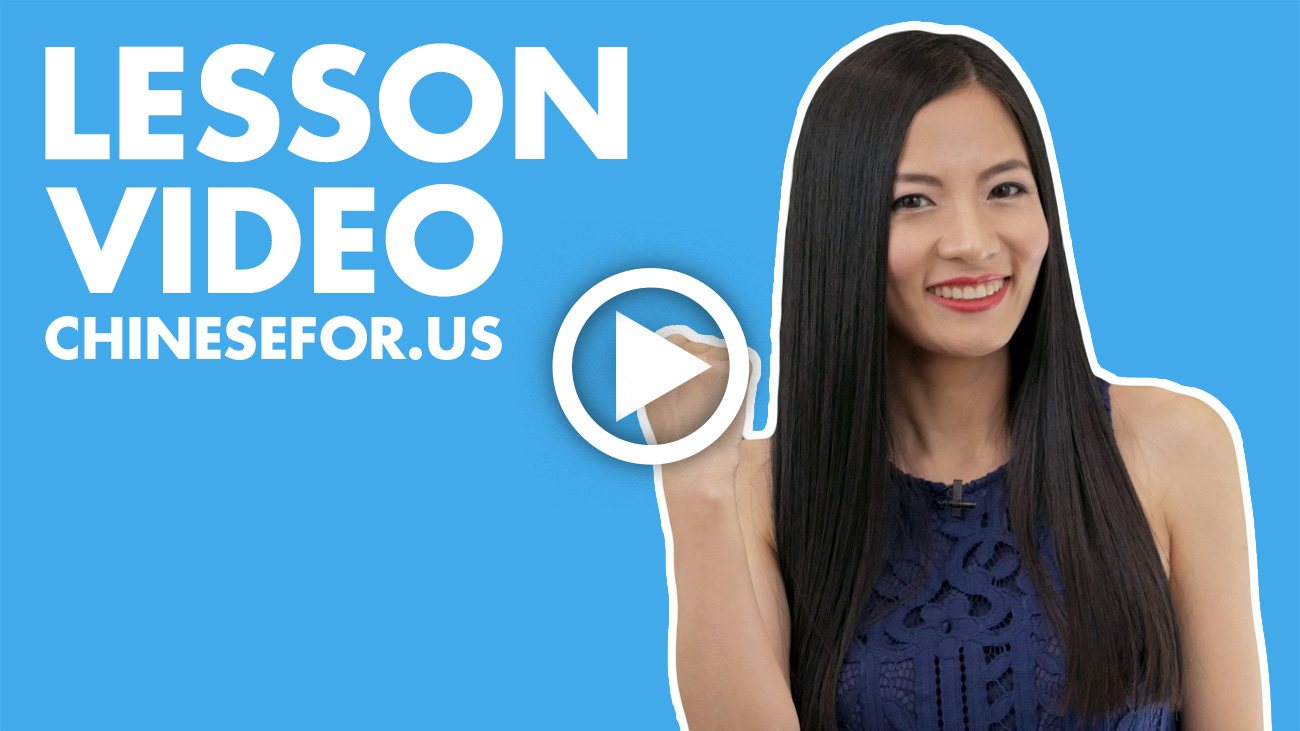Level 2 Lesson 5.1 – Her Hair is the Longest; Her Height is the Tallest
How to Say More in Chinese with 更 and the Most in Chinese with 最
In this video lesson we'll learn how to say more in Chinese with 更 and how to say the Most in Chinese with 最. We’ll also learn a grammatical sentence structure, which is Chinese Sentence with a "Subject-Predicate" Phrase as the Predicate主谓谓语句.
- How to say more in Chinese with 更
- How to say the most in Chinese with 最
- Chinese Sentence with a "Subject-Predicate" Phrase as the Predicate主谓谓语句
VOCABULARY
GRAMMAR
Grammar 1: How to Say More in Chinese with 更 · HSK 2
If we want to say something is more... in Chinese, we can use the Adverb 更. We can say more in Chinese with 更 following this structure:
Subject + 更 + Predicate (+Object)
The Predicate here can be either an Adjective Predicate or a Verb Predicate.
(1) 更 + Adj. Predicate
- zhèjiān bàngōngshì gèngdà
这间办公室更大。
this "jian" (of) office (is) more big(/bigger) - nǎge háizi de gèzi gènggāo
哪个孩子的个子更高?
which "ge" child's height (is) more tall(/taller)
(2) 更 + Verb Predicate
Verbs used after adverb 更 are usually Stative Verbs that suggest a status or a condition, it’s usually related to people’s feelings or physical status. For example,
- wǒ gèng xǐhuan chángtóufa
我更喜欢长头发。
I more like long hair - shéi gèng xiǎng qù nàr
谁更想去那儿?
who more wants to go there
We also learned that we can make a comparison in Chinese with 比, and 比 can be used together with 更 as well,
A 比 B 更 + Adj.
- hēshuǐ bǐ hē kělè gèng jiànkāng
喝水比喝可乐更健康。
drinking water "compared with" drinking cola (is) more healthy(/healthier). - zhè bu shǒujī bǐ nàtái diànnǎo gèng piányi
这部手机比那台电脑更便宜。
this "bu" cellphone "compared with" that "tai" (of) computer, (is) more cheap
In the above two sentences, using 更 or not does not affect the meaning of the sentence.
Grammar 2: How to Say the Most in Chinese with 最 · HSK 2
We can say the most in Chinese with 最. 最 is an Adverb and it is always used before the Predicate:
Subject + 最 + Predicate (+ Object)
Just like Adverb 更, 最 can also be followed by an Adjective Predicate or a Verb Predicate.
(1) 最 + Adj. Predicate
- wǒmen měinián shí yuè zuì máng, yě zuì lèi
我们每年十月最忙,也最累。
we every year October the most busy(busiest), also the most tiring - nǎ bù diànyǐng de shíjiān zuì cháng
哪部电影的时间最长?
which "bu" (of) movie's time (is) the most long(/longest)
(2) 最 + Verb Predicate
Verbs used after adverb 最 are also usually Stative Verbs.
- wǒ zuì xiǎng mǎi nàliàngchē
我最想买那辆车。
I the most want to buy that "liang" (of) car - tā zuì 'ài zhèlǐ de tiānqì
他最爱这里的天气。
he the most like here's weather
Grammar 3: Chinese Sentence with a "Subject-Predicate" Phrase as the Predicate · HSK 2
We’ve learned three types of Predicate before, it could be a Verb Phrase, a Noun Phrase or an Adjective Phrase.
And today we have the fourth type, that’s when the Predicate of the sentence is a “Subject-Predicate” Phrase.
| REAL SUBJECT | REAL PREDICATE | ||
| subject | predicate | ||
| tā 他 he |
shēntǐ 身体 body |
hěn jiànkāng 很健康 very healthy |
。 |
| qīzi 妻子 wife |
tóufa 头发 hair |
hěncháng 很长 very long |
。 |
| zhàngfu 丈夫 husband |
tóu 头 head |
téng 疼 hurts |
。 |
The Subject in the Subject-Predicate Phrase is usually part of, or related to the Real Subject of the Sentence. Just like in here 身体 is part of 他. His body is part of him.
7 Comments
Leave a Reply
You must be logged in to post a comment.


I must admit I don’t really get the subject predicate explanation. Most examples in English illustrate a syntax that is different from what is explained:
1) 他身体很健康。/ His body’s healthy => here body IS the real subject (in English)
2) 她头发更长, 今天天气最好 – same => hair and weather ARE the real subjects (in English).
All grammar explanations so far have been crystal clear. This is the first time when I am struggling a bit, but I am sure this will become clearer later on. Thank you so much for the superb quality of the course!
1.1) 他身体很健康。
2.1) 她头发更长。
3.1) 今天天气最好。
NOTE:
Please compare with:
1.2) 他的身体很健康。
2.2) 她的头发更长。
3.2) 今天的天气最好。
Also compare the English translation of 1.1 and 1.2
1.1) 他身体很健康。
1.2) 他的身体很健康。
The English translation “his body (is) very healthy”, with “his body” used as the REAL SUBJECT OF THE ENGLISH SENTENCE, only conveys the meaning of 1.1, but does not represent the Chinese sentence structure of 1.1. In English, there is no direct translation that fits the Chinese grammatical sentence structure of 1.1. However, the English translation “his body (is) very healthy” not only represents the sentence structure of 1.2, but also conveys the EXACT meaning of 1.2.
What a brilliant explanation.
In the lesson, how is 最好用 translated as “easiest to use”?
I would think it should be translated as “best to use”, while 最容易用 would be translated as “easiest to use”.
In the phrase 最好用(easiest to use), 最 is an adverb, meaning “the most”, 好用 is an adjective, meaning “good to use/easy to use”.
In certain context, 最好用 could mean “best to use/had better use”, but in those cases, 最好 is an adverb, meaning “had better/best to” and 用 is a verb.
Please also refer to 好 + Verb Structure .
I think your analyse of the the subject predicate is quite interesting.
Before i assumed 他身體很健康 is basically 他的身體很健康.
Is this structure the one that is often used to introduce context to a sentence, like 他, 身體很健康.
And could 他 therefore be omitted if this context is known?
Yes this is a 主题评论句, Topic-Comment Sentence.
While “主题评论句 Topic-Comment Sentence” is the name of this particular sentence structure, “Subject-Predicate” Phrase as the Predicate is the inner logic of how sentence elements are put together.
Details about Topic-Comment Sentence will be talked about in Lesson 20 and Lesson 25